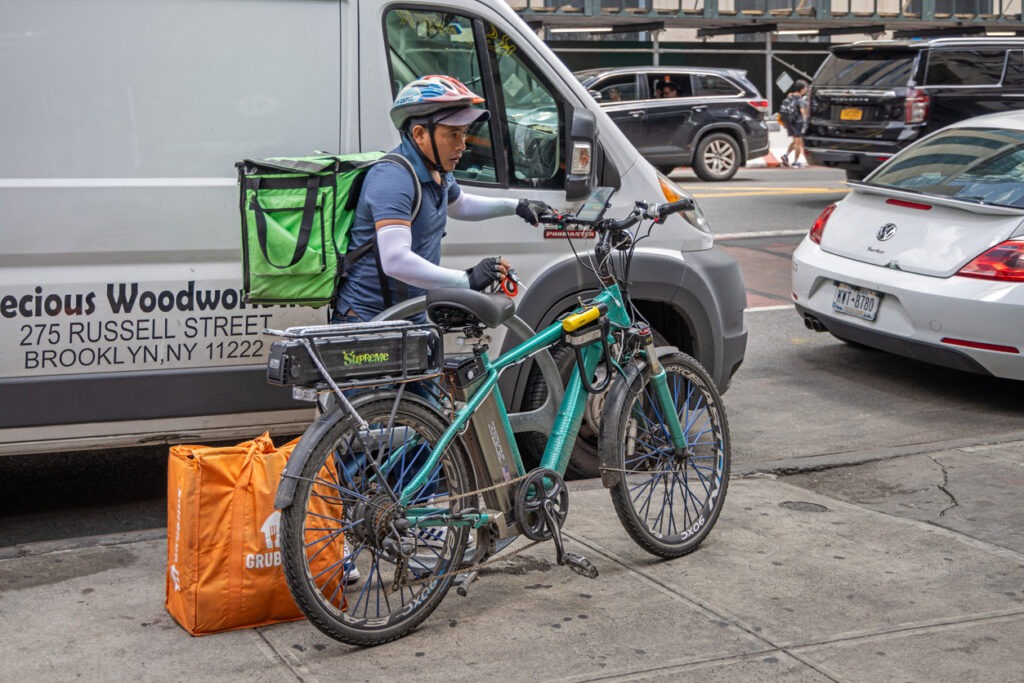
Photo Credits: Istock Photo
As the weather warms up, biking becomes an increasingly popular and enjoyable way for people of all ages to get outdoors, commute to work, or explore their neighborhoods. Whether navigating city streets or suburban paths, cycling offers health benefits and eco-friendly transportation. However, the rising number of cycling-related fatalities is concerning.
Between 2010 and 2024, cyclist deaths increased by 87% across the United States. These incidents impact a wide range of riders, from children and daily commuters to recreational cyclists and older adults.
Many of these accidents are linked to common, preventable risk factors, including distracted driving, distracted cycling, inadequate infrastructure, and limited visibility. With the highest cycling fatality rates in the summer months, it is essential to review the contributing factors to cyclist accidents.
At CED Technologies, our forensic engineering teams, which include human factors and transportation specialists, work to determine the causes of these crashes and provide insight into how they can be prevented in the future.
Cycling in the U.S.
Biking in both cities and suburbs has seen a significant rise over the past decade, driven by multiple intersecting factors. Growing public awareness around climate change has led many individuals to seek alternatives to car travel to reduce fossil fuel consumption. The COVID-19 pandemic further accelerated this shift, as people looked for socially distant modes of transportation and recreation.
Concurrently, city governments have increased support for alternative transit through initiatives like City Bike rental programs and the expansion of bike lanes, making cycling a more convenient and accessible option. Notably, the number of bikers in New York City has grown by over 60% in the past decade.
Another major factor contributing to the increase in biking is the proliferation of delivery services. Major retailers, gig economy platforms, and food delivery services have turned to bicycles, and more recently, electric cargo bikes, as a cost-saving alternative to traditional vehicles. Approximately 80% of the 65,000 app-based restaurant delivery workers in New York City use e-bikes and motorbikes. These bikes are easier to operate than cars, lowering the barrier to entry for delivery workers who may not have a driver’s license or access to a vehicle. This change has increased the number of cyclists on the road, particularly during peak delivery times in densely populated areas.

Photo Credits: Istock Photo
However, as more people take to two wheels, safety concerns have grown. In 2022, 83% of cycling fatalities in the U.S. occurred in urban areas, underscoring the risks that come with riding in traffic-heavy environments. The increase in cyclists includes people of all ages and backgrounds, commuters, recreational riders, delivery personnel, and tourists, each with different levels of experience and exposure to traffic hazards.
Common Risk Factors
With this diversification in cyclist demographics, it is important to examine the common risk factors that contribute to injuries and fatalities.
Age
In 2022, most bicyclist fatalities in the U.S. occurred among individuals aged 20 and older. This marks a significant shift, as bicyclist deaths among those under 20 have declined by 88% since 1975; fatalities in the 20-and-older age group are five times greater.
Age plays an important role in cycling safety. Younger riders may lack the experience or judgment needed to navigate traffic safely, while older adults may face physical challenges such as reduced reaction time, balance, or flexibility. Our human factors experts at CED Technology take these age factors into account when analyzing cycling accidents.
Purpose of Travel
Between 2008 and 2023, the number of bike commuters in NYC rose by 162%, reflecting a national trend of increased cycling across all age groups and purposes. While recreational riders may opt for quieter, low-traffic routes, others, such as delivery workers and daily commuters, often navigate busy streets under time constraints, which can lead to higher-risk behaviors. In fact, approximately 67% of bicyclist deaths in 2022 occurred on interstates and other major roads, underscoring the dangers of sharing high-speed traffic corridors with motor vehicles.
Infrastructure Challenges
Many areas lack protected bike lanes or proper signage, forcing cyclists to share space with vehicles. Bike lanes that are designed in accordance with the roadway’s characteristics can reduce bike and vehicle crashes. In fact, according to the USDT, converting traditional or flush buffered bicycle lanes into a separated bicycle lane with flexible delineators can reduce crashes up to 53%.
Driver Awareness
In the age of increased distracted driving due to factors such as added Advanced Driver Assistance Systems (ADAS) in motor vehicles, many motorists often fail to yield or check for cyclists, especially in areas not designed with bikes in mind. While vehicle features such as ADAS systems have automatic braking when a cyclist is detected, the most successful way to prevent an accident with a cyclist is for the driver to keep their eyes on the road.
Drivers who understand who might be riding in the area, how they need to change their driving behaviors when cyclists are in the area, can increase awareness and prevent accidents.
Steps Toward Safer Cycling
From a biomechanical engineering perspective, helmet usage can significantly reduce injuries related to cyclist accidents. In 2022, 62% of bicycle fatalities involved no helmet usage. In an additional 23% of fatalities, the helmet usage was unknown. Wearing a helmet during a cycling accident can help absorb the collision’s kinetic energy to reduce the impact on the brain, distribute the impact force over a larger surface area, prevent direct skull fractures, and limit rotational brain injuries.
Cycling at night presents significant risks, as reduced visibility makes it harder for drivers to see cyclists. In fact, cyclist fatalities in 2022 were highest between 6 and 9 PM, accounting for 21% of all deaths. To reduce these dangers, cyclists should wear retroreflective clothing with colors that contrast with their surroundings, use flashing bike lights on the front and back, and signal clearly to other drivers their intentions on the roadway; all simple steps that can make a significant difference. As cycling continues to grow in popularity for both transportation and recreation, adopting these safety measures is more important than ever.
At CED Technologies, our forensic engineers play a crucial role in uncovering the causes of accidents and supporting safer roadways for all. If you are handling a cycling-related case, contact us today or submit an assignment to see how we can help.





